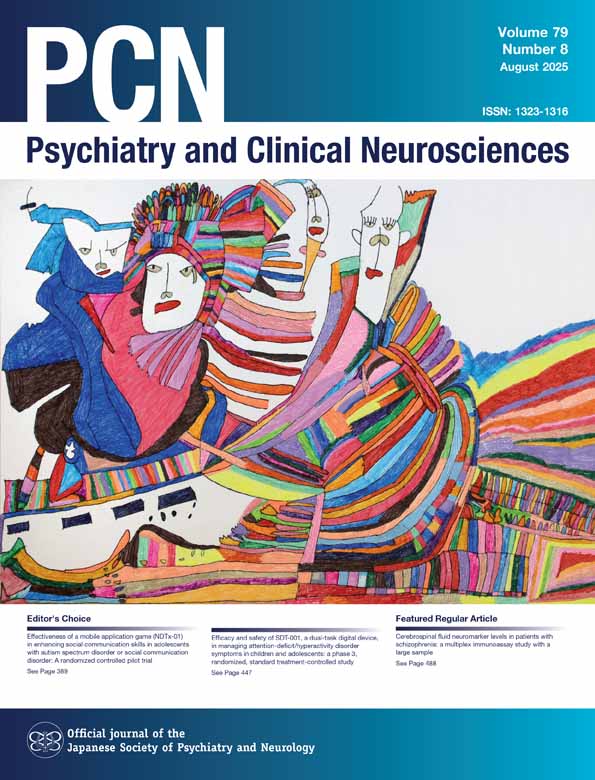A newly developed assay for melatonin using cells expressing human mel-1a receptor
Abstract
We have developed a radioreceptor binding assay (RRA) method for melatonin using membranes from Chinese hamster ovary cells that can stably express human mel-1a receptors. We measured melatonin levels in plasma samples collected every 4 h for 24 h using the RRA and radioimmunoassay (RIA) methods, simultaneously. There was a statistically significant correlation between the melatonin levels measured by the two methods, this newly developed method providing a sensitive bioassay. As it is possible to circumvent the cross-reactivity usually occurring in the RIA method, this method may be an important tool for detecting bioactive substances relative to the mel-1a receptor.
INTRODUCTION
Melatonin is a hormone synthesized in the pineal body. The melatonin secretion during the night becomes 50–100 times higher than during the daytime. In conditions without time cues, the secretion pattern of melatonin persists and shows a circadian rhythm. Recently, coding sequences for various melatonin receptors such as mel-1a and mel-1b were isolated and cloned.1 Further, patients suffering from psychiatric disorders, such as mood disorders,2 circadian sleep disorders,3 have been reported to display an abnormal melatonin secretion. Therefore, measuring plasma melatonin level is one of the important tools to investigate the etiologies and pathogeneses in these disorders.
The immunological methods such as the radioimmunoassay (RIA) have been used to measure plasma melatonin level. However, there has been a possibility that the data obtained from the RIA does not reflect a physiological response and is not reliable due to the immunological binding for measuring melatonin and cross-reactivity with structurally related compounds. Therefore, we tried to develop a new assay method for measuring melatonin using melatonin receptor-transfected cells and applied the assay for plasma samples obtained from normal controls.
MATERIAL AND METHODS
Expression of human mel-1a receptor in Chinese hamster ovary cells
Human fetal brain poly(A) + RNA was purchased from Clonetech (Palo Alto, CA, USA) and used to preparate cDNA. Primers encompassing mel-1a receptor were designed from sequences from Gen Bank. The product of PCR amplification was cloned into an eukariotic expression vector pCR3-Uni carrying a G418 (antibiotic)-registant gene as a selection marker. The plasmid was transfected into Chinese hamster ovary (CHO) cells by means of the calcium phosphate method using a mammalian transfection kit (Toyobo, Osaka, Japan). The transformants were selected in DMEM (Dulbecco’s modified Eagle’s medium) supplemented with 10 fetal bovine plasma and 800 μg/L G418 in a CO2 incubator. The surviving cells were screened for their response to melatonin and highly responding cells were cloned.4
Plasma samples
Five healthy male volunteers gave informed consent to participate in this study. Plasma samples collected at 4-h intervals between 02.00 h and 22.00 h were kept frozen at − 80°C. Melatonin was extracted from plasma samples using the cartridge (Oasis HLB, Waters Corporation, Massachusetts, USA). A total of 1 mL of plasma containing melatonin was passed through the cartridge. Then, the cartridge was washed twice with 1 mL of 10% methanol and once with 1 mL of 100% hexane. Finally, the elution was obtained with 1 mL of 100% methanol. After evaporation, it was reconstituted with 1 mL of incubation buffer.
Competitive binding assay
For the radioreceptor binding assay (RRA) method, we use the preparation of the CHO cell membrane expressing the mel-1a receptor. Aliquots of CHO cell membranes (50 μL) were incubated for 1 h with 18 pg/mL 125I-melatonin in 100 μL of incubation buffer, and 1–10000 pg/mL unlabeled melatonin or sample in 100 μL of incubation buffer. At the end of incubation, 200 μL of mixture was put into 96-well microplate the bottom of which was made from glass fiber. Bound 125I-melatonin was separated from unbound 125I-melatonin by filtration through the glass fiber. Then, the glass fiber was washed twice with 200 μL of incubation buffer. Finally, the radioactivity of the glass fiber punched out was determined.
RESULTS
Plasma melatonin levels assayed using the RRA showed diurnal rhythms with a peak between 02.00 and 06.00 h (Fig. 1). Figure 2 shows the relationship between the melatonin levels measured by the RRA and RIA. There was a linear relationship between them with a statistically significant correlation (Y = 1.09X + 6.19, r = 0.92, P < 0.001). Intra- and inter assay variances for 50 pg/mL or 100 pg/mL of melatonin were 10.1% and 14.9% or 9.1% and 18.2%, respectively. The dissociation constant (Kd) value of 95.24 pM.
. Rhythms of melatonin secretion obtained from 5 normal controls using the RRA method. The peak of melatonin secretion was between 02.00 h and 06.00 h.
).
DISCUSSION
In order to physiologically measure plasma melatonin level, we developed a new method, the RRA, using membranes from CHO cells that can stably express human mel-1a receptors. This method is simple and reproducible compared to the RIA. The dissociation constant value calcu-lated showed a good agreement with those already reported. There was a good correlation between the data from the RRA and RIA. As this newly developed method utilized the cellular receptor for measuring melatonin levels, it might be a good way to circumvent the cross-reactivity usually occurring in the RIA method. Furthermore, this method might be an important tool for detecting bioactive substances relative to the mel-1a receptor.




